Should pizza dough be room temperature before using
Home » Oven Temp » Should pizza dough be room temperature before usingShould pizza dough be room temperature before using
Should Pizza Dough Be Room Temperature Before Using. Proofing the dough at room temperature will speed up the process. Once youve first measured the dough balls internal temperature make a. Once you bring the dough out of the cooler keep it covered to prevent drying and let it temper at room temperature for upwards of 2½ hours or until the dough ball temperature reaches 50F. Allow dough balls to warm AT room temperature.
 Best Pizza Dough Proofing Temperature Crust Kingdom From crustkingdom.com
Best Pizza Dough Proofing Temperature Crust Kingdom From crustkingdom.com
When your pizza dough is cold the gluten network will be tense and difficult to stretch into a pizza. 1 Insufficient dough fermentation. And when you put cold pizza dough in the oven you will often get sickly looking black spots. Pizza dough will keep in the freezer for about 3 months. Yes you want to give the dough a slight head start with the fermentation process so the usual recommendation is to leave the dough for one hour at room temperature after it has been kneaded. Allow dough balls to warm AT room temperature.
However the texture and flavor of the pizza crust might turn out a bit different.
However it will still remain leavened. 2 Use of cold dough straight from the cooler. Stretching dough - Cold versus Room Temp. Prep your workspace with olive oil to avoid sticking. But if you want to be fancy cold-fermenting the dough or make a Neapolitan-style pizza you want to lower the temperature. Allow dough balls to warm AT room temperature.
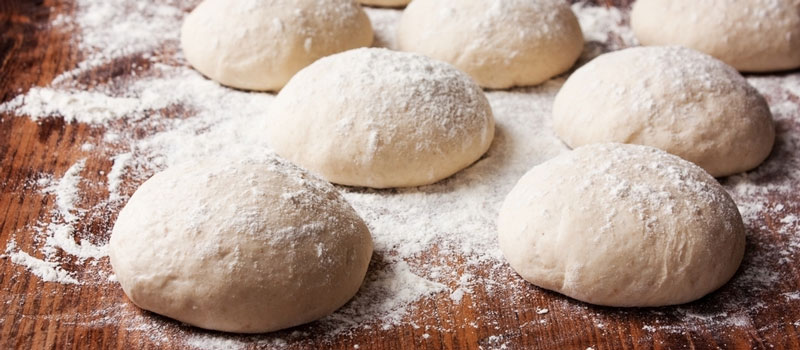 Source: amanopizza.com
Source: amanopizza.com
This allows the dough to warm slightly for yeast activity. If you arent going to begin to roll out the dough right away then keep it in a refrigerator. Proofing Pizza Dough at Room Temperature. 1 Insufficient dough fermentation. This will give you a usable window of 25 to 3 hours for the dough balls just remember to keep them covered.
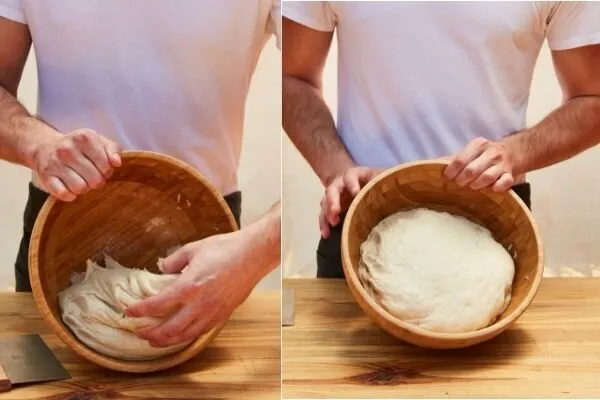 Source: huffpost.com
Source: huffpost.com
And Im not very well trained. Pizza dough after it has risen should not sit out for more than a 3 hours. Then you can take it to the make table for baking and its propensity to bubble will be greatly reduced or even eliminated. Proofing is the act of allowing your pizza dough to properly rise at room temperature for one or up to 3 or 4 hour s before you shape it into a pizza. Yes you want to give the dough a slight head start with the fermentation process so the usual recommendation is to leave the dough for one hour at room temperature after it has been kneaded.
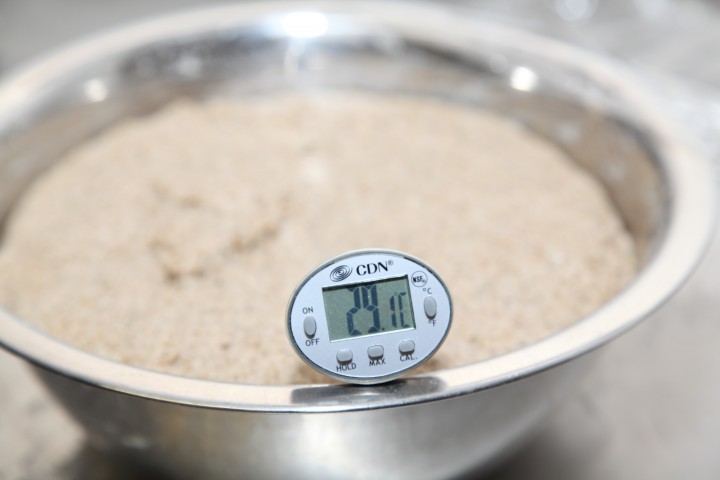 Source: weekendbakery.com
Source: weekendbakery.com
You can refrigerate the dough after almost any step but after the first rise or a little before works best. Most pizza recipes will not define at which temperature you should be prrof the dough. 1 Insufficient dough fermentation. Pizza dough after it has risen should not sit out for more than a 3 hours. While it seems like a simple task and really it is its something thats often overlooked.
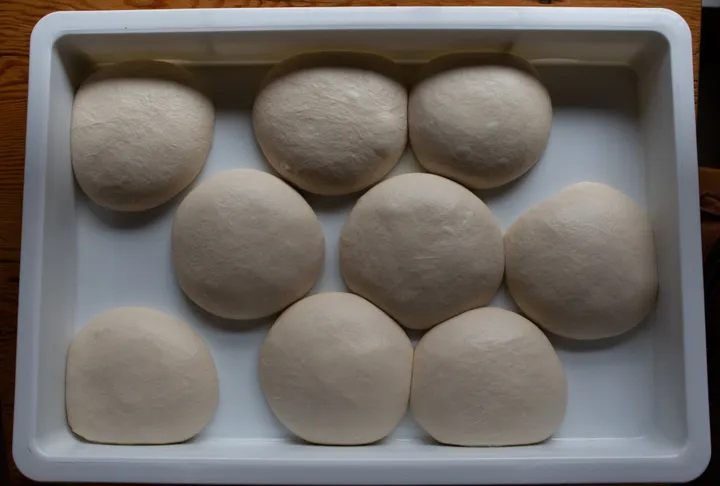 Source: huffpost.com
Source: huffpost.com
Get your dough to room temperature before you work with it and let it relax for 15 minutes if it feels too tight. But its safe to assume that this means room temperature. When your pizza dough is cold the gluten network will be tense and difficult to stretch into a pizza. However it will still remain leavened. Yes you want to give the dough a slight head start with the fermentation process so the usual recommendation is to leave the dough for one hour at room temperature after it has been kneaded.
 Source: cookingchops.com
Source: cookingchops.com
2 Use of cold dough straight from the cooler. When your pizza dough is cold the gluten network will be tense and difficult to stretch into a pizza. Once you bring the dough out of the cooler keep it covered to prevent drying and let it temper at room temperature for upwards of 2½ hours or until the dough ball temperature reaches 50F. The gluten within the dough will pull it back to its original shape and stretching will become a losing battle. As Malcolm said cold dough is more elastic less extensible and resists stretching however allowing a ball of pizza dough to reach room temperature is great training for patience.
 Source: pizzaotherbread.wordpress.com
Source: pizzaotherbread.wordpress.com
Some think that you need to bring your commercial pizza dough up to room temperature while others think that its best to place it in the fridge to defrost and then pull out to once again bring to room temperature. When making rolls or pizza I. Some think that you need to bring your commercial pizza dough up to room temperature while others think that its best to place it in the fridge to defrost and then pull out to once again bring to room temperature. Pizza dough after it has risen should not sit out for more than a 3 hours. When your pizza dough is cold the gluten network will be tense and difficult to stretch into a pizza.
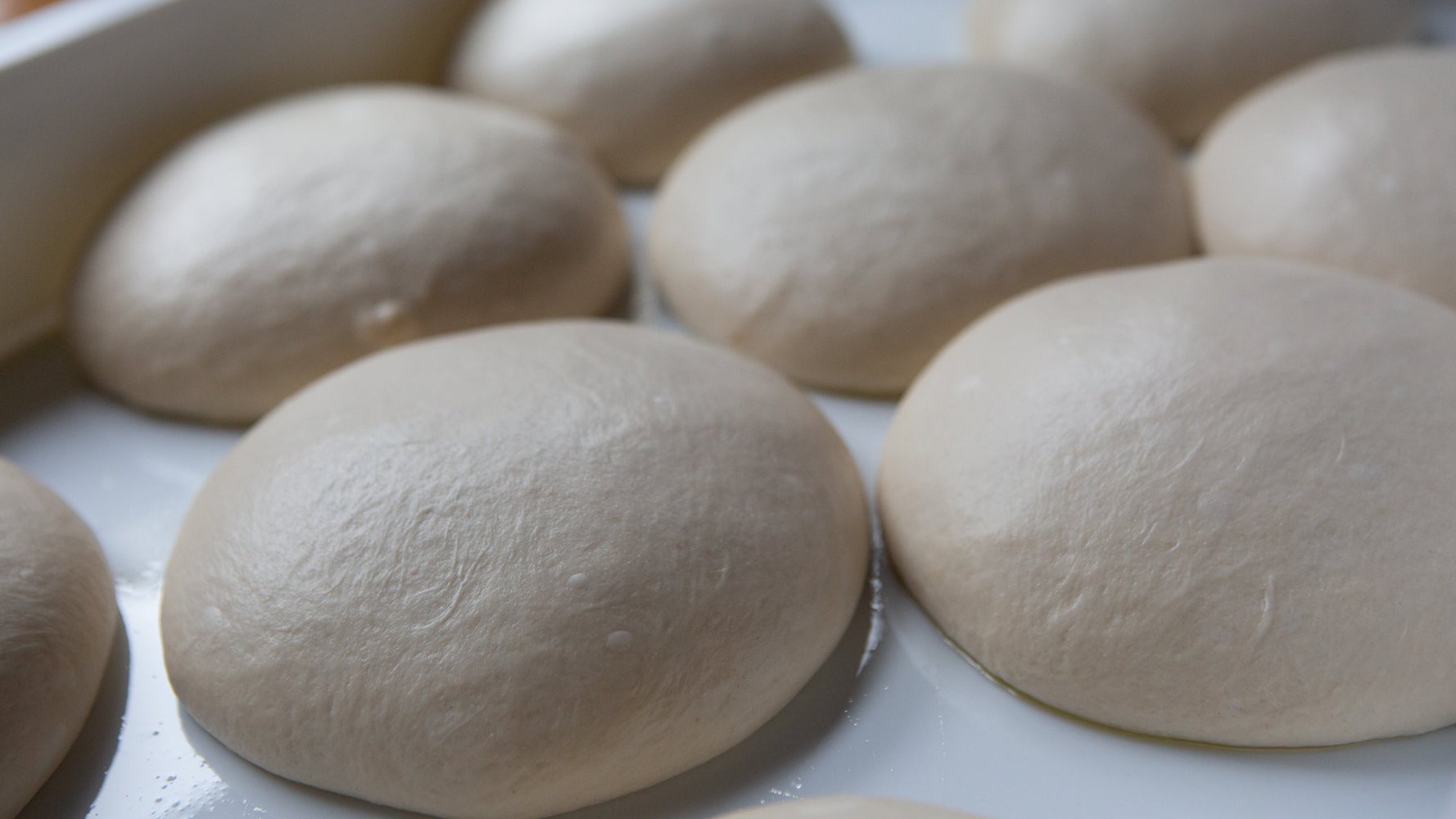 Source: huffpost.com
Source: huffpost.com
Some think that you can even take dough right from the freezer and put it into your oven. However there are some variations on this with some people claiming that 90 minutes is sufficient. Can I put pizza dough in the fridge after it has risen. In general dough left at room temperature overnight is still edible and safe to use the next day. You can refrigerate the dough after almost any step but after the first rise or a little before works best.
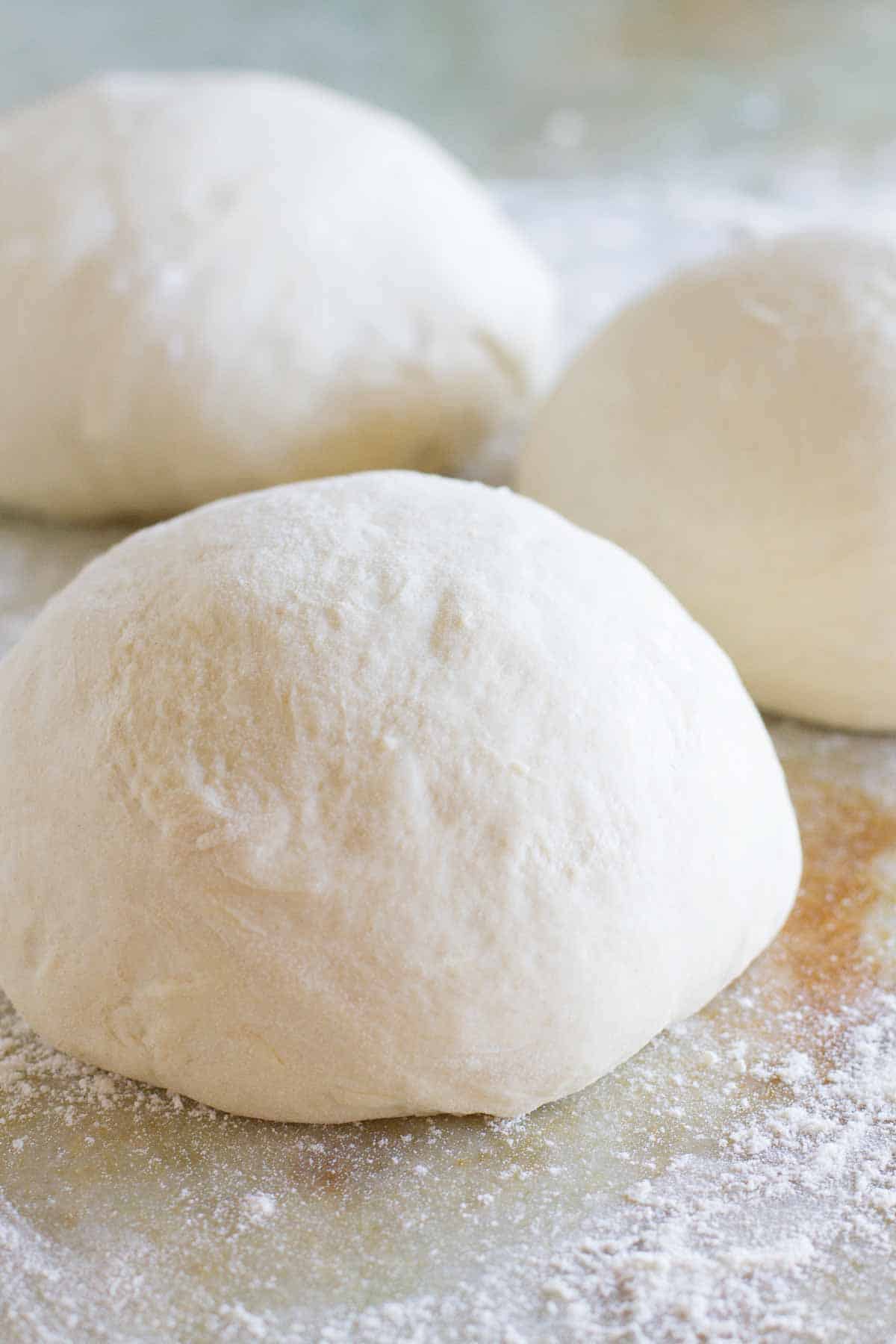 Source: tasteandtellblog.com
Source: tasteandtellblog.com
And when you put cold pizza dough in the oven you will often get sickly looking black spots. Prep your workspace with olive oil to avoid sticking. So in most homemade pizza recipes the dough should be proofing in room temperature. When you are ready to use your frozen pizza dough you should move it from the freezer into the fridge to let it thaw overnight. However certain factors will allow you to determine the best temp and these may include how much dough has been made and how large the dough balls are.
 Source: pizzacraft.com
Source: pizzacraft.com
The gluten within the dough will pull it back to its original shape and stretching will become a losing battle. Room temperature pizza dough will stretch easily and bake into a light and puffy crust. Dough that is colder than 65 degrees will be very difficult to stretch. Before you begin stretching warm up your cold dough for at least 30 minutes. And Im not very well trained.
 Source: pmq.com
Source: pmq.com
However it will still remain leavened. This allows the dough to warm slightly for yeast activity. The dough should be fermented in the cooler overnight or at least 2 hours at room. Then you can take it to the make table for baking and its propensity to bubble will be greatly reduced or even eliminated. Proofing Pizza Dough at Room Temperature.
 Source: thewindupspace.com
Source: thewindupspace.com
Even at room temperature the dough will begin to form a skin as it dries. Pizza dough will keep in the freezer for about 3 months. It can then be placed in the fridge for 1-3 days before the flavor starts getting strong. If you arent going to begin to roll out the dough right away then keep it in a refrigerator. The best starting point is to proof pizza dough at room temperature.
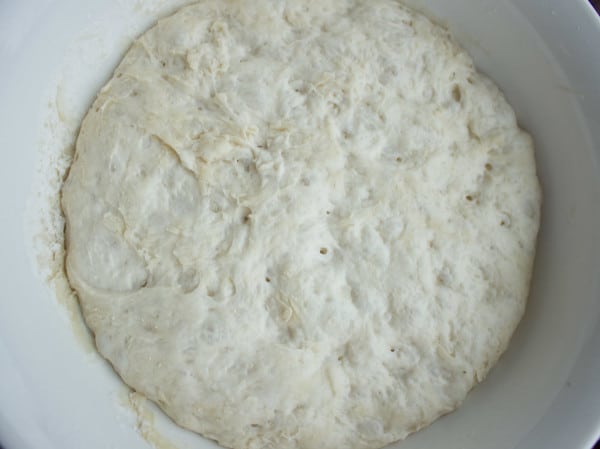 Source: twopurplefigs.com
Source: twopurplefigs.com
However the texture and flavor of the pizza crust might turn out a bit different. The resulting pizza will be smaller and thicker than it could have been. Get your dough to room temperature before you work with it and let it relax for 15 minutes if it feels too tight. I recommend allowing the dough balls to warm to an internal temperature of 50F before opening them into skins. For best results when using prepared pizza dough let the dough rest at room temperature in the bag or covered until it.
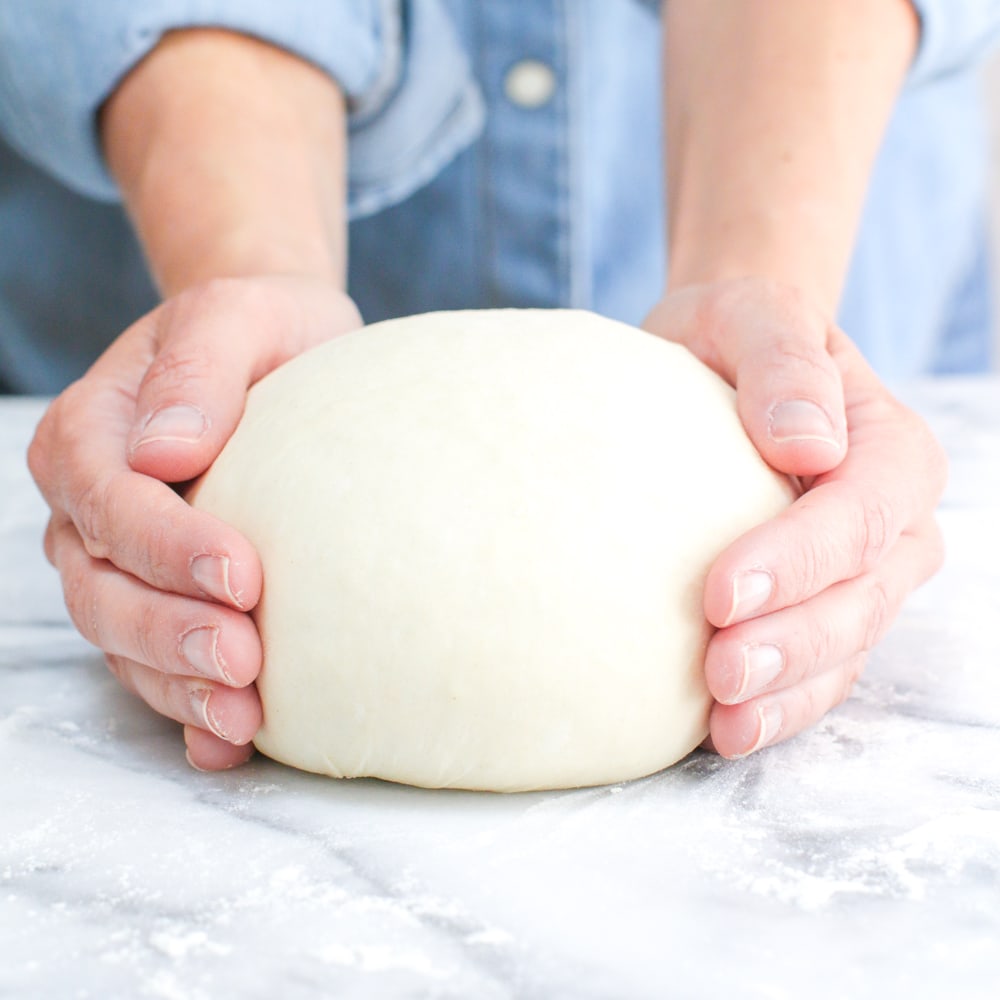 Source: bakingthegoods.com
Source: bakingthegoods.com
Some think that you need to bring your commercial pizza dough up to room temperature while others think that its best to place it in the fridge to defrost and then pull out to once again bring to room temperature. You should always make sure your pizza dough is at room temperature before rolling it or shaping it into a pizza. The resulting pizza will be smaller and thicker than it could have been. I recommend allowing the dough balls to warm to an internal temperature of 50F before opening them into skins. Bring your dough to room temperature.
 Source: crustkingdom.com
Source: crustkingdom.com
As Malcolm said cold dough is more elastic less extensible and resists stretching however allowing a ball of pizza dough to reach room temperature is great training for patience. Pizza dough will keep in the freezer for about 3 months. Pizza dough should proof at room temperature for at least 2 hours. Get your dough to room temperature before you work with it and let it relax for 15 minutes if it feels too tight. Proofing the dough at room temperature will speed up the process.
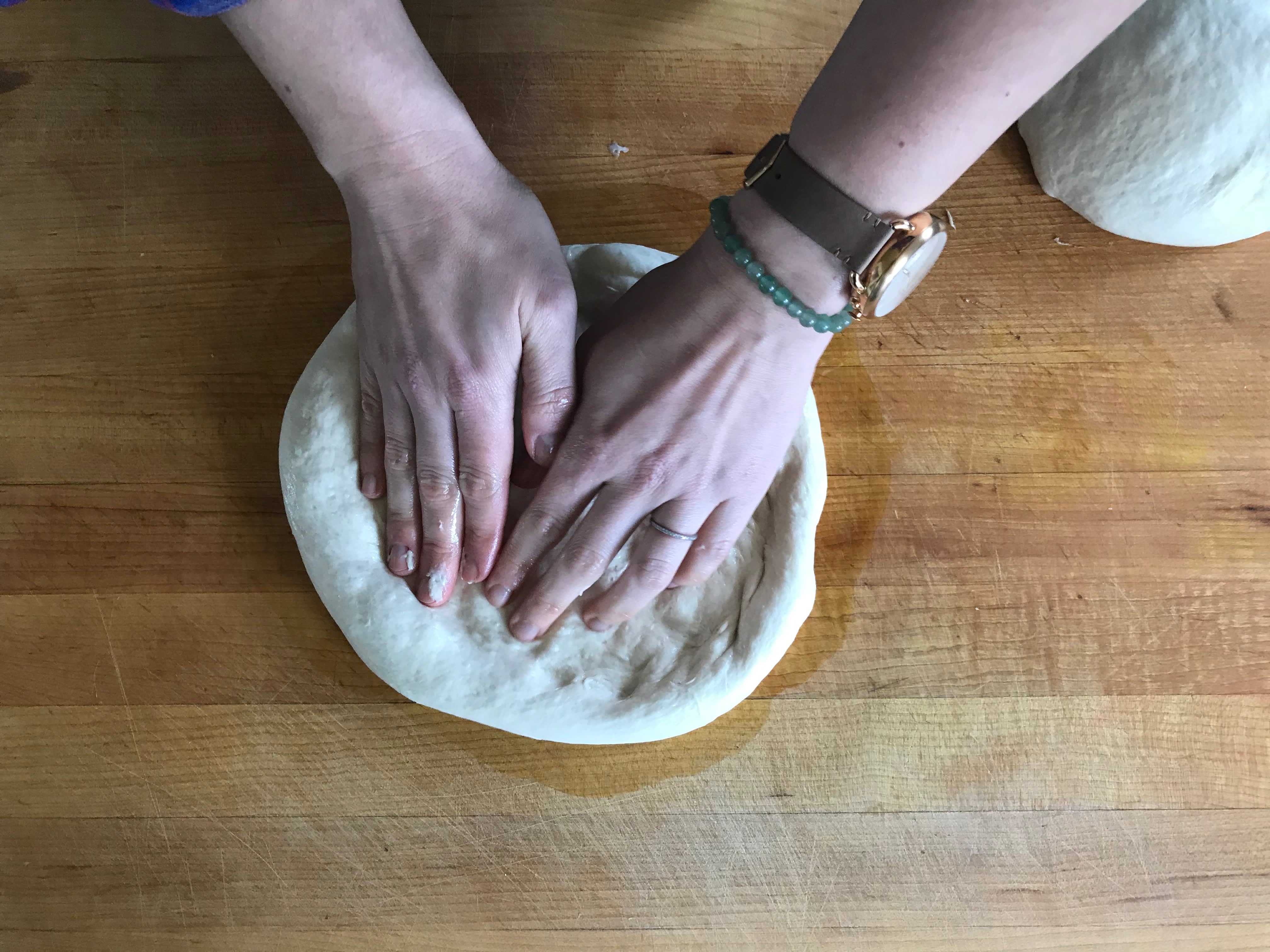 Source: thekitchn.com
Source: thekitchn.com
I recommend allowing the dough balls to warm to an internal temperature of 50F before opening them into skins. Even at room temperature the dough will begin to form a skin as it dries. It can then be placed in the fridge for 1-3 days before the flavor starts getting strong. Some think that you can even take dough right from the freezer and put it into your oven. Prep your workspace with olive oil to avoid sticking.
If you find this site value, please support us by sharing this posts to your favorite social media accounts like Facebook, Instagram and so on or you can also bookmark this blog page with the title should pizza dough be room temperature before using by using Ctrl + D for devices a laptop with a Windows operating system or Command + D for laptops with an Apple operating system. If you use a smartphone, you can also use the drawer menu of the browser you are using. Whether it’s a Windows, Mac, iOS or Android operating system, you will still be able to bookmark this website.
Category
Related By Category
- What temperature do you cook pork loin ribs
- What temp should i cook brisket too
- What temperature should you cook pork at
- What temperature do you bake brisket at
- What temperature should you cook pork chops at
- What temperature do you cook chicken breast on a traeger
- What temp to cook boneless chicken breast on grill
- What temperature to slow cook chicken thighs
- What temp do i bake chicken breast at
- What temp do you cook pork chops too